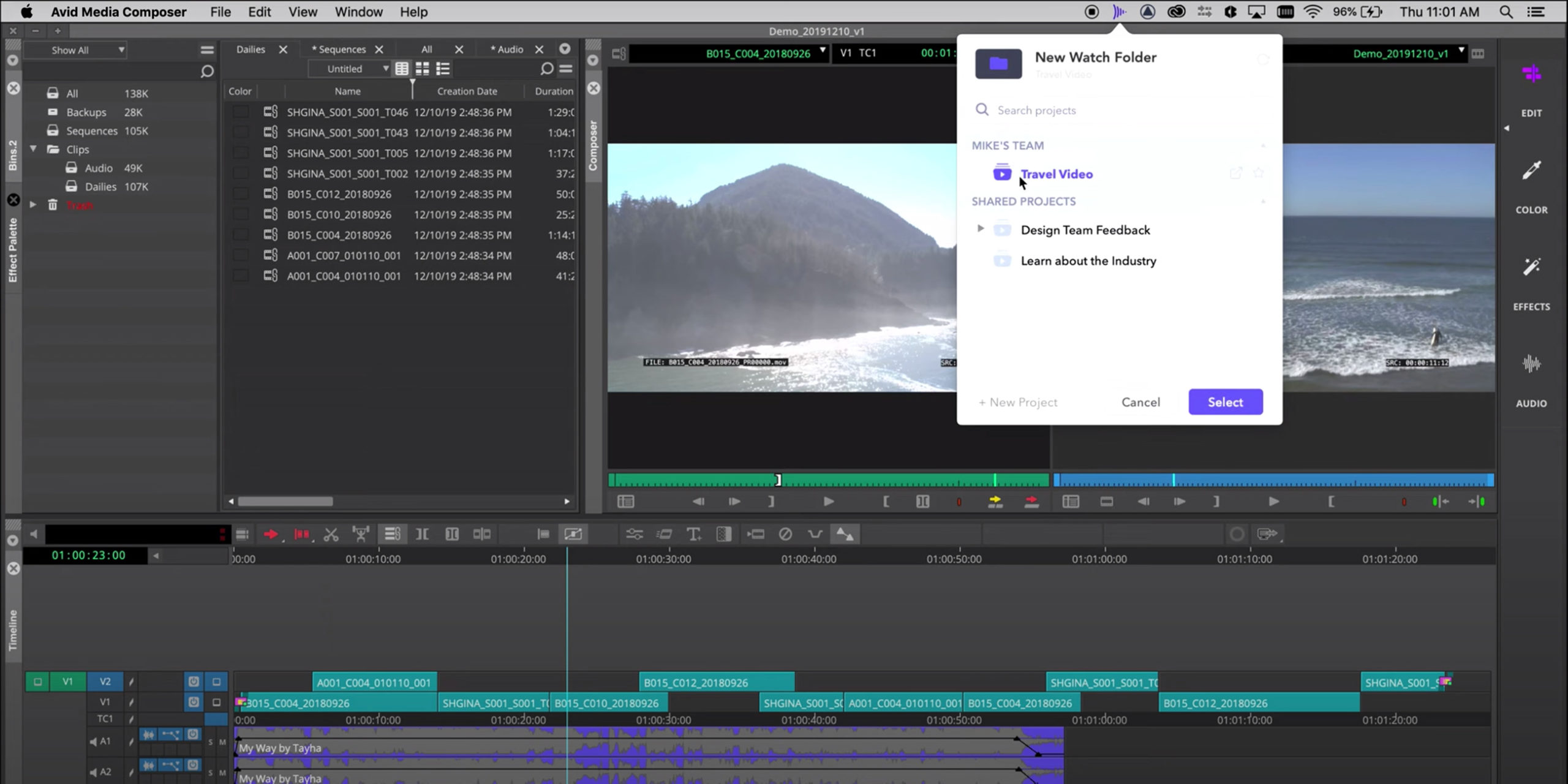It’s a really exciting time for post-production technology and workflows.
Michael Cioni is producing a new training series entirely from his home, Hurlbut Academy is teaching us the ins and outs of a secure post-production pipeline, and we (the Frame.io Workflow Team) are developing some exciting new tools.
We’ve all learned so much over the last several weeks, and now is a great opportunity to use these new tools and techniques to finally build a remote workflows of your own.
So when the opportunity came up to demonstrate a quick workflow improvement, I wanted to share it with the community.
A friend of mine recently asked me how she could start editing remotely with Avid Media Composer. She’s a veteran Avid editor, and was especially interested in review and feedback with clients, directors, producers, and assistants.
This is an easy workflow solution, and it pays huge returns for the creative process, so I made a quick video tutorial to show it off.
The new collaborative landscape
Working remotely has become a necessity for many post-production teams. Editors, directors, producers, assistant editors, and many other video pros are now being forced to collaborate in new ways, sometimes outside their technological or creative comfort zones.
But as Michael Cioni recently showed us, it’s perfectly possible to set up an Avid editorial team at home. You can even use high-security air gap workflows from home by leveraging cloud tools.
While most editors are used to working in the same facility as their directors and assistants, close collaboration can increasingly be done at a distance. But before we take a look at the specific tools, let’s look at the problems we have to solve in a remote collaboration workflow:
Creative collaboration
Crafting the story is the key focus of the director-editor relationship. We’re used to logging hours and hours together in the same dark room in close quarters.
So how do you replicate this experience while remote?
Synchronous review
In some cases, where real-time collaboration is required, high-quality video conferencing and screen sharing can be a solution.
Smooth interactions between a director and editor are critical in the editorial process, especially on narrative work where subtle cues can make or break a scene. Directors need to be able to give precise directions, and editors need to be able to react quickly.
That means real-time review tools can work well for this process, though latency and stream compression are significant factors to consider.

Synchronous review tools are not perfect, but they can feel quite similar to the in-room experience many of us are familiar with.
Asynchronous review
But even though real-time tools might seem like the most natural extension of being in the suite together, asynchronous collaboration offers many productivity and creativity benefits.
Consider this. We recently asked creative teams about their editorial workflows, and over half said they spend more than 75% of their day working independently. These same teams said they feel more prepared for remote workflows. Why is this?
Because teams that work independently have more time to think critically and experiment creatively. This is true whether they’re in the office or at home.
For editors, asynchronous collaboration gives them more time to work through the different aspects of a scene and massage it, all before the director weighs in. It also gives them freedom to make tweaks without wasting the director’s time, and allows them to generate different versions for comparison.
Once a cut is ready for the director, they can watch (and rewatch) a scene and think carefully about every element, without taking up the editor’s time. That frees the editor to work on other scenes.
This tag team approach is an efficiency multiplier, and can really add up in gained productivity for the day, rather than having everyone on the same real-time video conference walking through a scene.
This type of asynchronous review also encourages contemplative and measured feedback, which can improve working relationships and boost team morale.
Asynchronous collaboration tools can take a bit of adjustment to leverage fully in your workflow, but the long term benefits can be tremendous.
The review cycle
Once the creative collaboration process is complete, and the editor and director have a cut they’re satisfied with, it’s time for the review cycle.
Whether you’re working with a client or a producer, making this step of your workflow efficient and productive is crucial to the overall success of the project. Communication needs to be clear, revisions need to be accurate, and the time between rounds of feedback needs to be as short as possible.
Thankfully, Frame.io makes this easy. Producers can give timecode-specific feedback, and clients can tag particular stakeholders for extra attention on a note. Plus they can even draw on the frame to specify if there is something they want highlighted, cropped, censored, or corrected in an image.
Getting the edit to Frame.io is easy with Avid. First, you need to export the file from Media Composer to a Frame.io Watch Folder. As soon as the export is complete, the file upload will start.
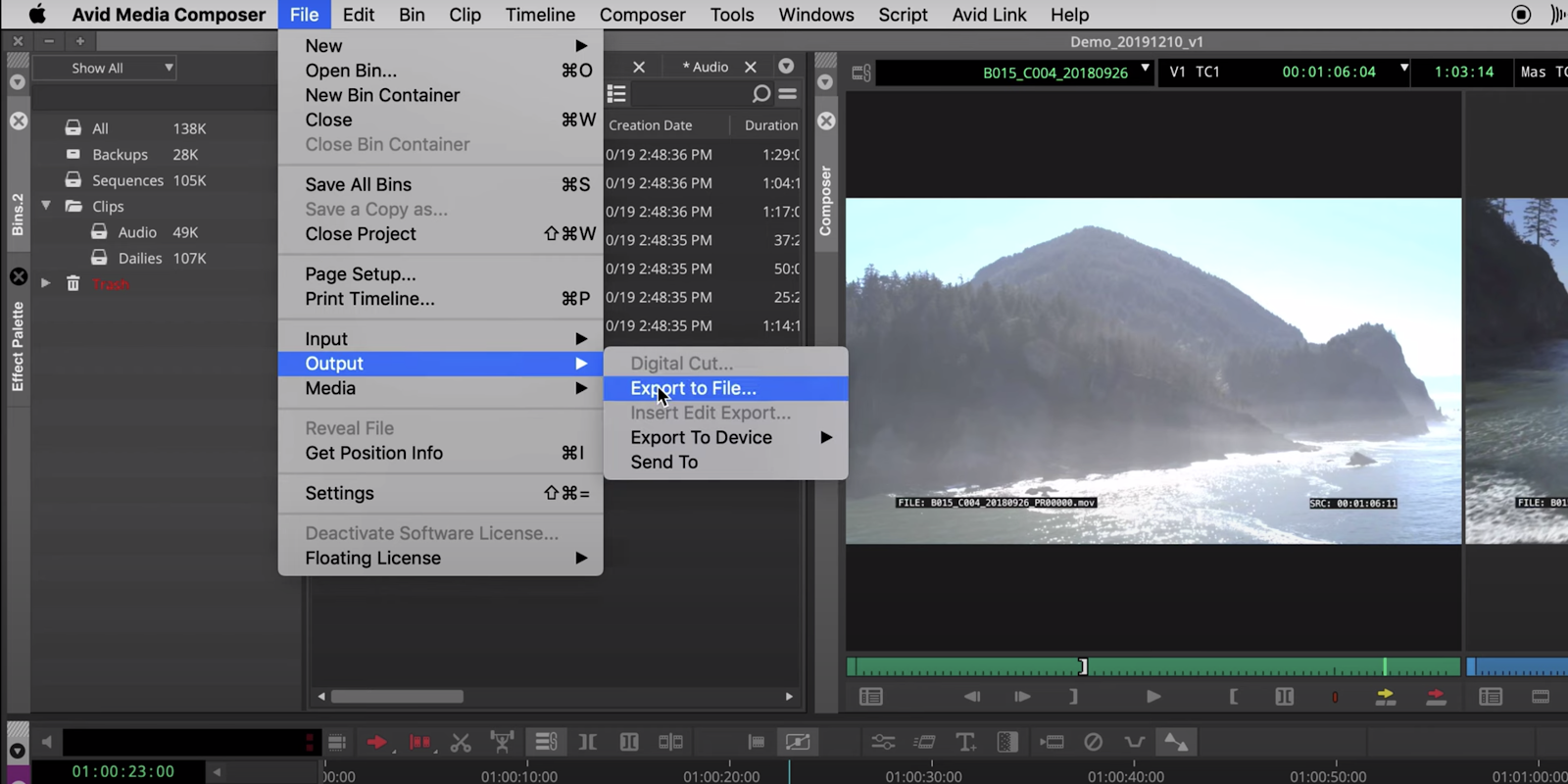
You can even set up multiple destinations for different exports. Just select a folder on your system to act as the Watch Folder for a particular project or reviewer, then choose the destination(s) in Frame.io.
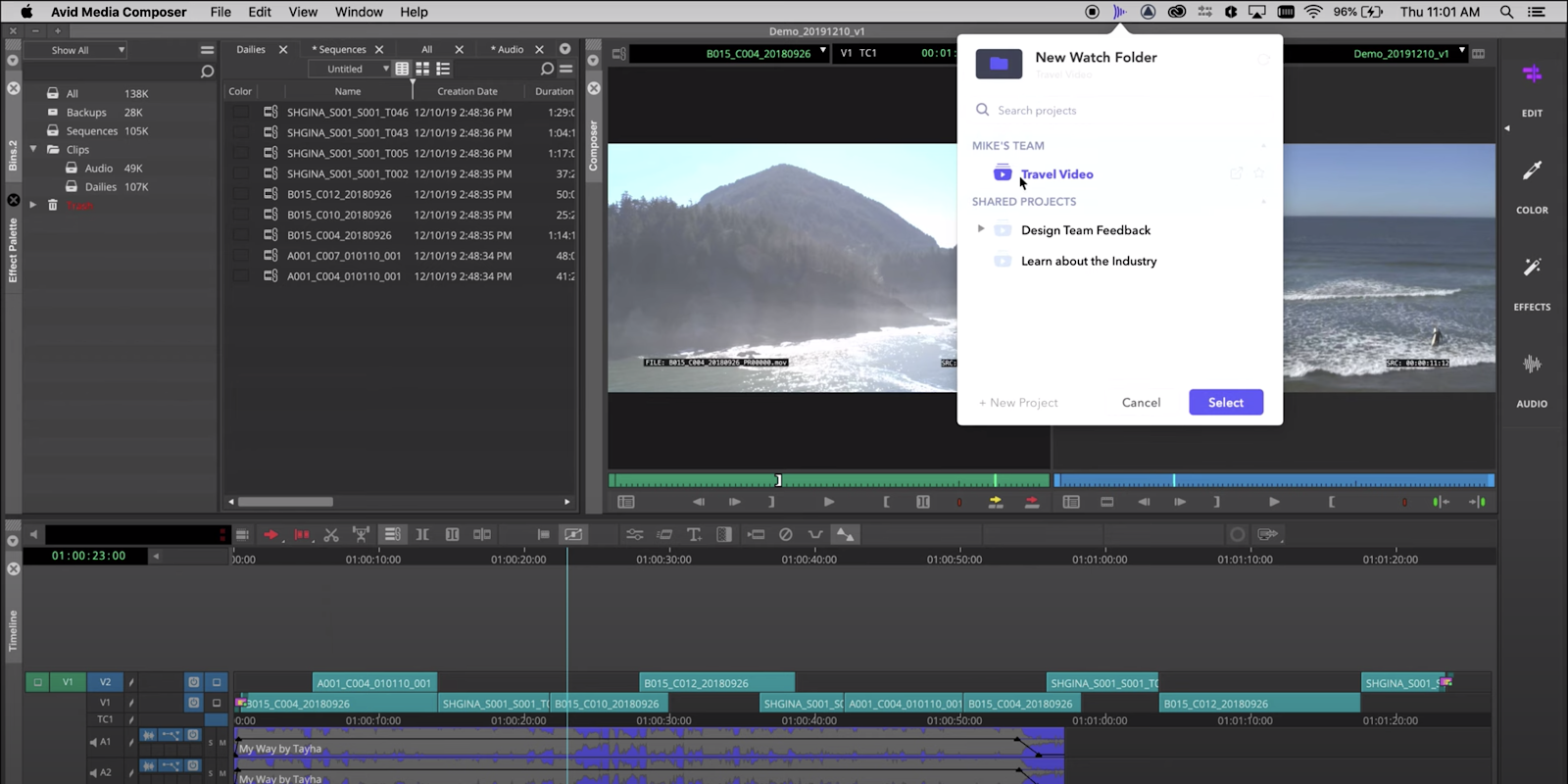
Once the cut has finished a round of feedback, you can download the comments for Media Composer right inside the web app.
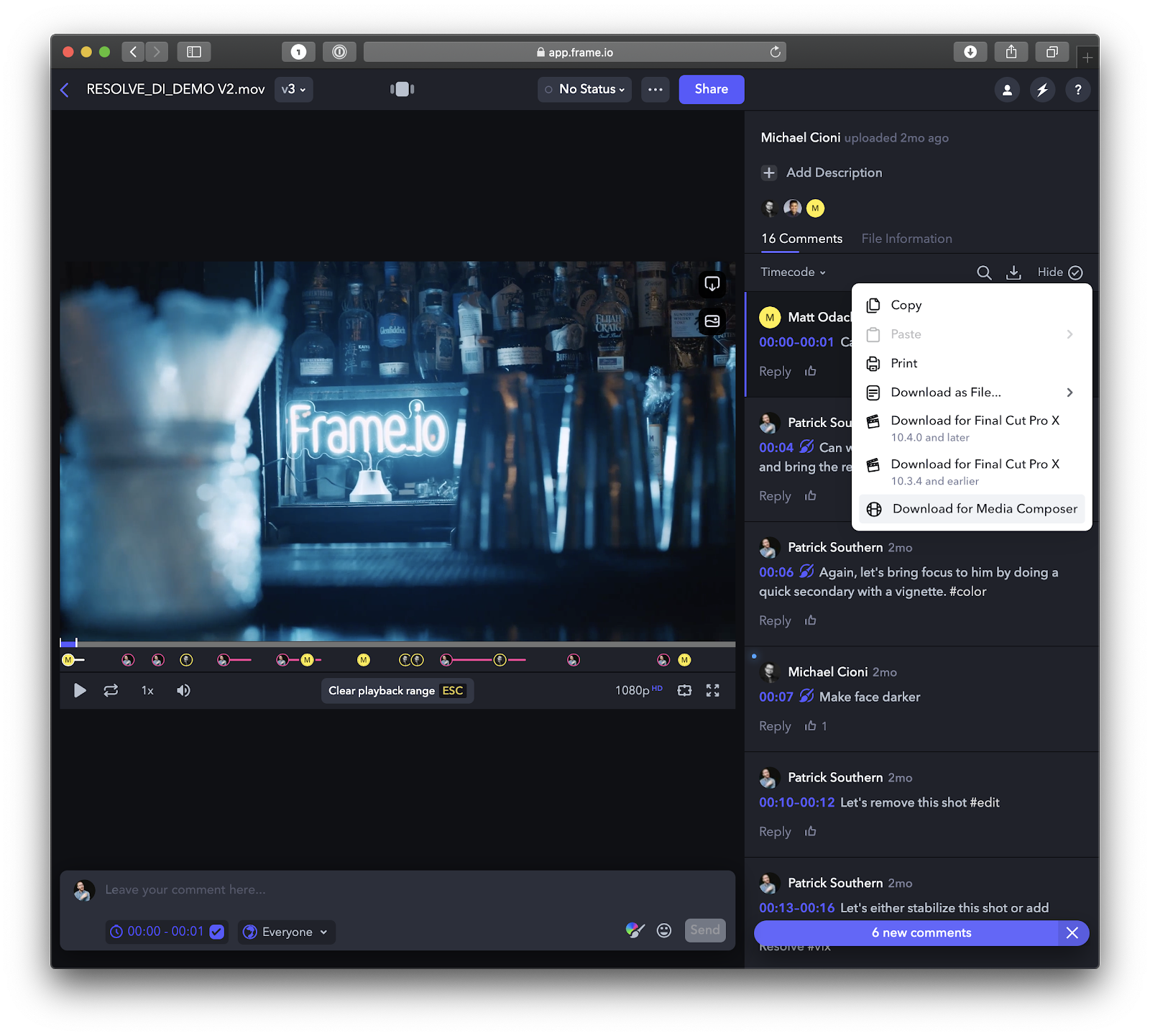
The comments will be converted into an Avid XML, which creates markers that you can import directly into your sequence.
To import the markets, simply right-click in the program window, select Markers Window, open the hamburger menu in the bottom right, and click Import Markers.
Note, make sure to enable the Text/XML option before finishing the import.
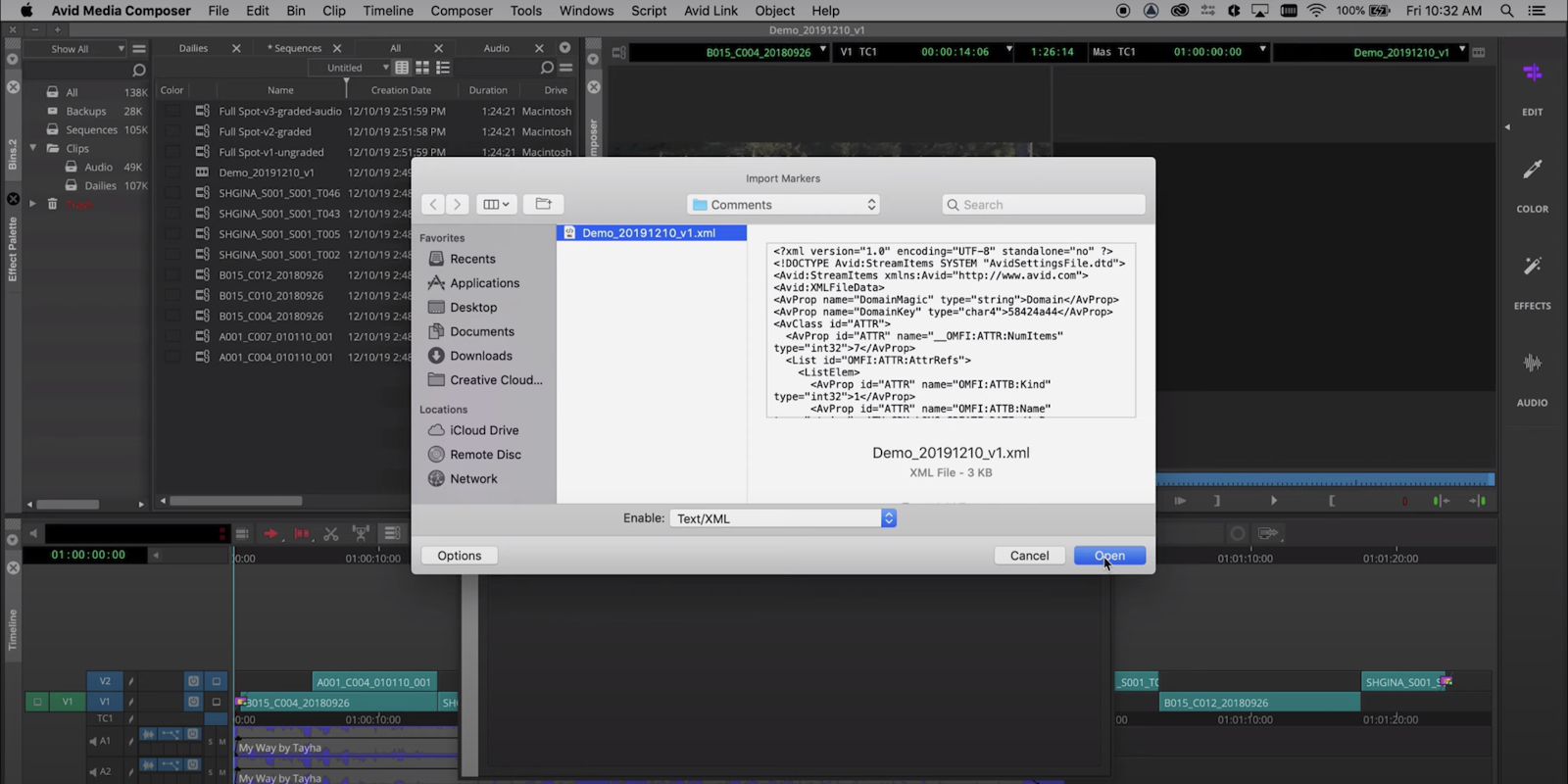
The location markers from Frame.io will populate your timeline in Media Composer, allowing you to quickly jump from marker to marker and address notes.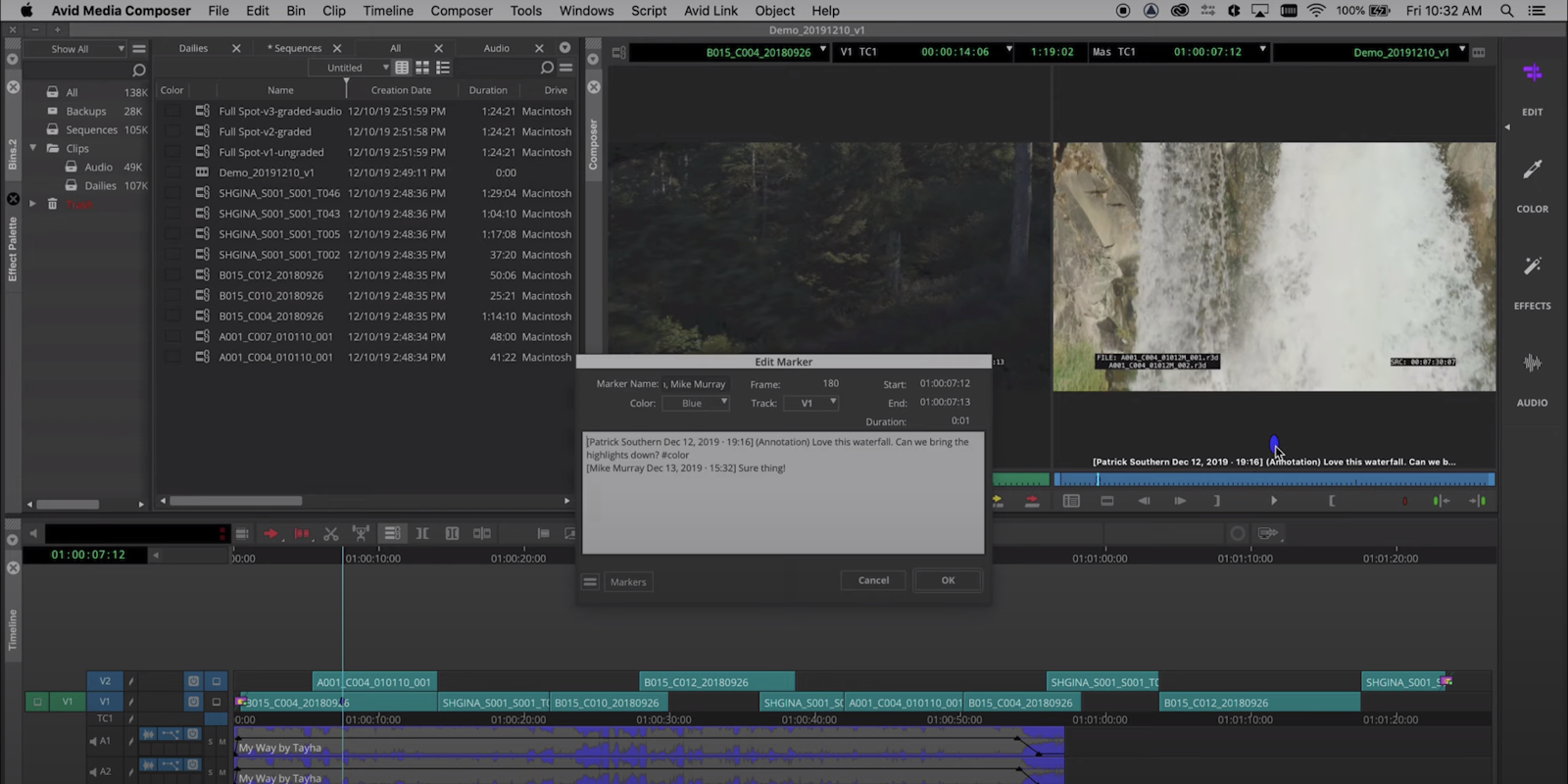

After the editor has addressed all the notes and a new cut is ready, just repeat this cycle for the next round of revisions. It makes the entire review process inside Avid so much better.
Connecting editors and assistant editors
Ensuring that editors and assistant editors have a smooth and robust process for sharing timelines and media is critical to any workflow. But since many teams depend on shared storage, remote workflows might seem like a challenge
But there are many viable methods for connecting the editor and AE when they are in physically different locations.
Guerilla Style
Thanks to the way Avid’s bins are structured, it’s fairly easy to send bin files (.avb) back and forth. This method does require that both the AE and the editor have an exact copy of the media first, but for many commercial (i.e. non-feature) projects this shouldn’t be a problem.
Copying media from one drive to another is pretty easy these days, especially with tools like Hedge. Sure, shipping physical drives can be a bit risky, but it works in a pinch.
However, sending media directly with an accelerated cloud transfer service, like Frame.io’s upcoming transfer tool, is usually a much safer (and cheaper) solution.
Once everyone has the media at their location, AEs can prepare new bins and then send the .avb files via Frame.io or Slack.
Studio Style
In a recent episode of Workflow From Home, Michael Cioni explored several hybrid cloud workflow solutions, including Avid’s new Edit on Demand service.
Edit on Demand is still in beta, but it might feel the most familiar for editors and AEs used to an Avid workflow. And since it leverages the cloud, your media and bins can easily be passed around the team without much trouble.
Another bonus is that hefty workstations are less necessary, since the compute load is happening in the cloud. This opens up more diverse (and comfortable) remote work options, but still maintains a studio-level process, just like being together in your edit bay.
Wrap-up
This remote workflow for Avid makes collaboration, review, feedback, and media management super easy and efficient.
It only takes a few minutes to set up, but will save you plenty of time and energy. That means you’ll be able to focus more on being creative and productive while remote.
Are you cutting from home? Let us know in the comments, and please share your tips and tricks for working from home.

